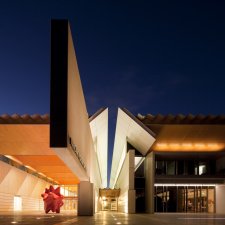- About us
- Support the Gallery
- Venue hire
- Publications
- Research library
- Organisation chart
- Employment
- Contact us
- Make a booking
- Onsite programs
- Online programs
- School visit information
- Learning resources
- Little Darlings
- Professional learning
George Mealmaker (1768–1808), convict and activist, became involved in radical politics in his native Dundee in the 1780s. A weaver by trade, he was influenced by the Unitarian minister Thomas Fyshe Palmer and by 1791 had joined the Dundee chapter of the Sons of Liberty, a group formed in support of the ideals of the French Revolution. In 1793, Mealmaker wrote an inflammatory broadsheet in the group’s name. A call for parliamentary reform and democratic elections, it veered too much towards sedition for the government’s liking, leading to Palmer – who printed and distributed it – being transported to New South Wales in 1794, along with fellow ‘Scottish Martyrs’ Thomas Muir, William Skirving and Maurice Margarot. Despite these events and the severe repression of radical groups that came about in their wake, Mealmaker’s political activity continued unabated. In 1794, he was questioned, but not charged, on suspicion of being involved in Robert Watt’s plan to seize Edinburgh Castle and overthrow the government (the offence for which Watt was hanged). Mealmaker re-formed the Dundee Sons of Liberty in 1795, and the following year became involved with a clandestine group, the Society of United Scotsmen. He became their principal ideologue, writing their constitution, publishing The moral and political catechism of man (1797), and, through his involvement in a network of radical printers and booksellers, causing to be distributed various other potentially seditious tracts. This all caught up with him in November 1797 when he was arrested, tried and found guilty on charges of sedition and administering unlawful oaths. He was sentenced to transportation to New South Wales for fourteen years, arriving in Sydney in November 1800. During his first 18 months in the colony he was again implicated in rumours of rebellion, but in 1803 received a conditional pardon and was appointed supervisor of the weaving work conducted at the Female Factory in Parramatta. Following the near destruction of the factory in a fire in 1807, Mealmaker lapsed into poverty and alcoholism. He died as a result of ‘alcoholic suffocation’ in March 1808 and was buried in the churchyard of St. John’s, Parramatta.
Collection: National Portrait Gallery
Purchased 2015



On one level The Companion talks about the most famous and frontline Australians, but on another it tells us about ourselves.



Visit us, learn with us, support us or work with us! Here’s a range of information about planning your visit, our history and more!



We depend on your support to keep creating our programs, exhibitions, publications and building the amazing portrait collection!